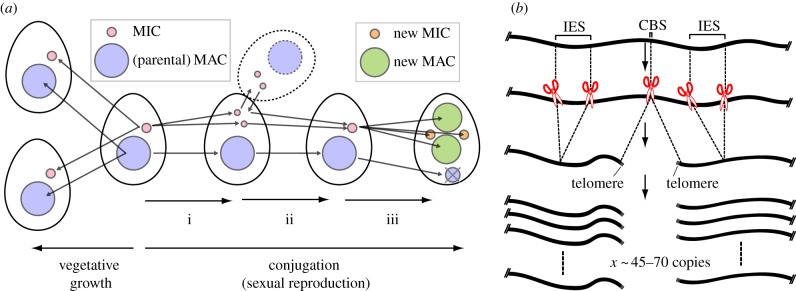Figure 1.
Life cycle and programmed genome rearrangements of Tetrahymena. (a) Life cycle of Tetrahymena. A single Tetrahymena cell contains a macronucleus (MAC) and a micronucleus (MIC). When sufficient nutrients are available, Tetrahymena grow by binary fission, and the MAC and the MIC divide independently (vegetative growth). After prolonged starvation, cells undergo conjugation, the sexual reproduction process: (i) the MIC undergoes meiosis to generate four haploid nuclei, three of which are discarded, and one selected haploid nucleus proceeds with post-meiotic division to form two haploid pronuclei; (ii) one of the two pronuclei is exchanged between the mating partner, and the stationary and the exchanged pronuclei fuse to form a diploid zygotic nucleus; and (iii) the zygotic nucleus divides twice to form two new MACs and two new MICs, while the parental MAC is degraded. Readers interested in the details of the Tetrahymena life cycle should refer to [22]. (b) Programmed genome rearrangements. In the newly formed MAC, chromosome breaks occur at CBSs and telomeres are formed de novo. In addition, internal eliminated sequences (IESs) are removed by DNA elimination. Each MAC chromosome is endoreplicated to approximately 45–70 copies (see text for discrepancy among the previous estimates of the MAC chromosome copy number).

